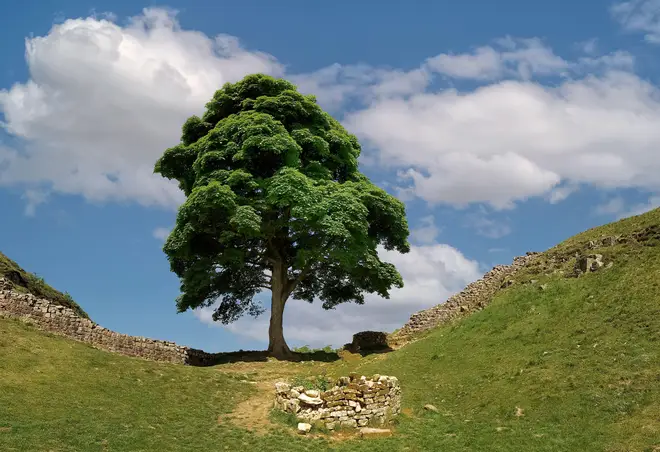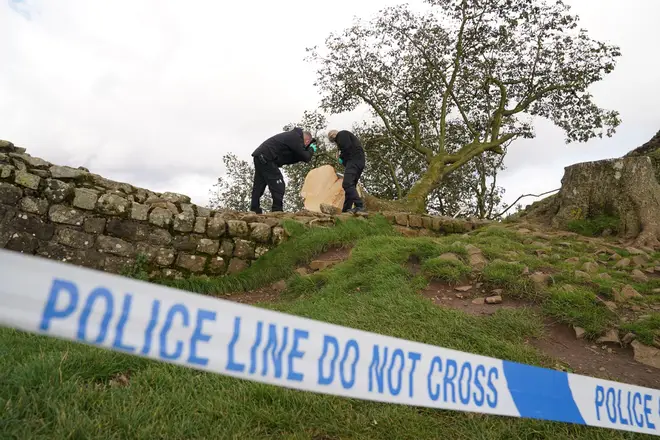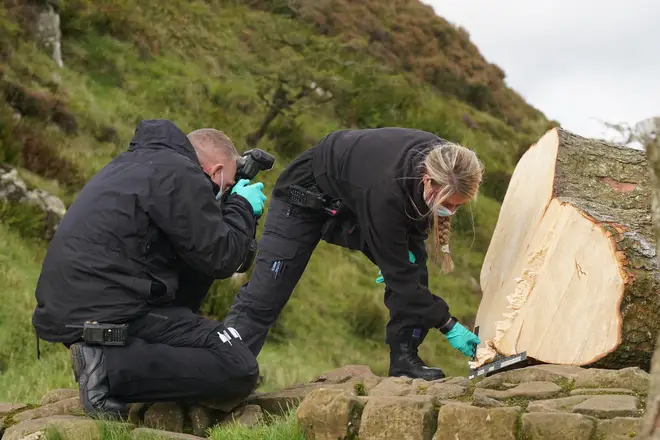
Richard Spurr 1am - 4am
5 October 2023, 14:35 | Updated: 5 October 2023, 14:36

The felling of the world-famous Sycamore Gap tree in north-east England also damaged Hadrian's Wall, according to inspectors.
The felling of the 300-year-old tree, which was cut down in a "deliberate act of vandalism" last Thursday, has shocked people across the UK and worldwide.
Two people - a 16-year-old boy and a 69-year-old man - have been arrested and released on bail.
As well as destroying the tree itself, the culprit has damaged the 1,901-year-old Roman wall that it stood next to, according to Historic England.
Photos from the scene show the tree lying on the wall.
Read more: Who cut down the Sycamore Gap Tree? Forensic examiners search scene as theories mount

A statement from the organisation read: "We visited Sycamore Gap on Friday for a preliminary inspection.
"Whilst we identified that Hadrian's Wall has sustained some damage, we have not been able to access the site to carry out a full investigation so a further archaeological appraisal will take place once the site is considered safe.

"As the government's heritage adviser, we are involved because Hadrian's Wall is protected as a scheduled monument.
"We appreciate how strongly people feel about the loss of the tree, and its impact on this special historic landscape, and will continue to work closely with key partners as this progresses."

The Romans built Hadrian's Wall as a fortification to separate the part of Britain under its control from the people further north.
It lies entirely in what is now England, running 73 miles from Wallsend in the east to Bowness-on-Solway in the west.
Construction of the wall began in AD 122 and lasted six years. It is named after Hadrian, the Roman emperor at the time.